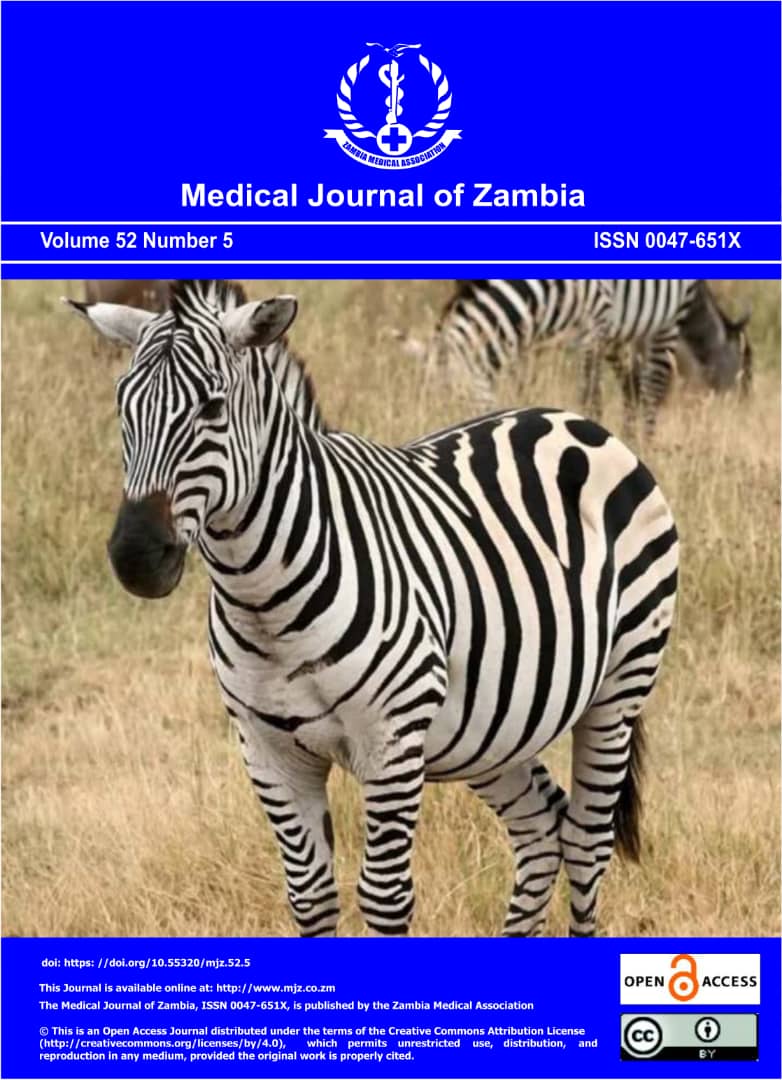Factors influencing the high prevalence of Cholera cases in Masala Area, Ndola District – Zambia: A Case study of Masala.
DOI:
https://doi.org/10.55320/mjz.52.5.810Abstract
Introduction : Background & Aim: Cholera, a severe diarrheal disease caused by Vibrio cholerae, is primarily transmitted through contaminated food and water, often due to poor sanitation and inadequate access to clean water. Globally, cholera affects 1.3 to 4 million people annually, leading to 21,000 to 143,000 deaths [2]. In Zambia, cholera was first recorded in 1977, with 29 outbreaks reported to date. The latest outbreak, beginning in October 2023, has resulted in over 20,500 cases and 699 deaths, with Lusaka as the epicenter. Ndola recorded more than 600 cases in a week, which over 50% of those cases came from Masala [5]. This study aimed to investigate factors influencing the high prevalence of cholera in Masala area.
Methods: A cross sectional study was used, which applied simple random sampling of individuals and health care providers respectively. The sample size was determined using Fischer’s formula to obtain a sample of 384 respondents. Statistical analysis including demographics, logistic regressions, and descriptive analysis were performed.
Results: Findings indicated that the majority of respondents were aged 20-39 years (60.3%), with more female participants 228(62.6%) than males 137(37.4%). Key protective factors included proper toilet use (ₐOR=1.38; 95% CI 0.80–2.37) and washing hands after using the toilet (ₐOR=3.54; 95% CI 1.42–8.81; p=0.01). Significant risk factors included not washing hands after handling children’s feces (ₐOR=1.98; 95% CI 1.13–3.46; p=0.02), consuming unwashed fruits or vegetables (ₐOR=0.41; 95% CI 0.25–0.69), and improper food cooking practices (ₐOR=0.52; 95% CI 0.28–0.96; p=0.04).
Conclusion: Cholera occurrence is predicted by knowing prevention measures such as proper toilet use and washing hands after use of toilet. Hygiene factors including not washing hands regularly and proper food handling. Strengthening community health education on sanitation, ensuring safe drinking water, promoting toilet ownership, and increasing cholera vaccination awareness are critical to reducing cholera cases in Masala.
Downloads
Downloads
Published
Issue
Section
License
Copyright (c) 2025 Medical Journal of Zambia

This work is licensed under a Creative Commons Attribution-NonCommercial 4.0 International License.









